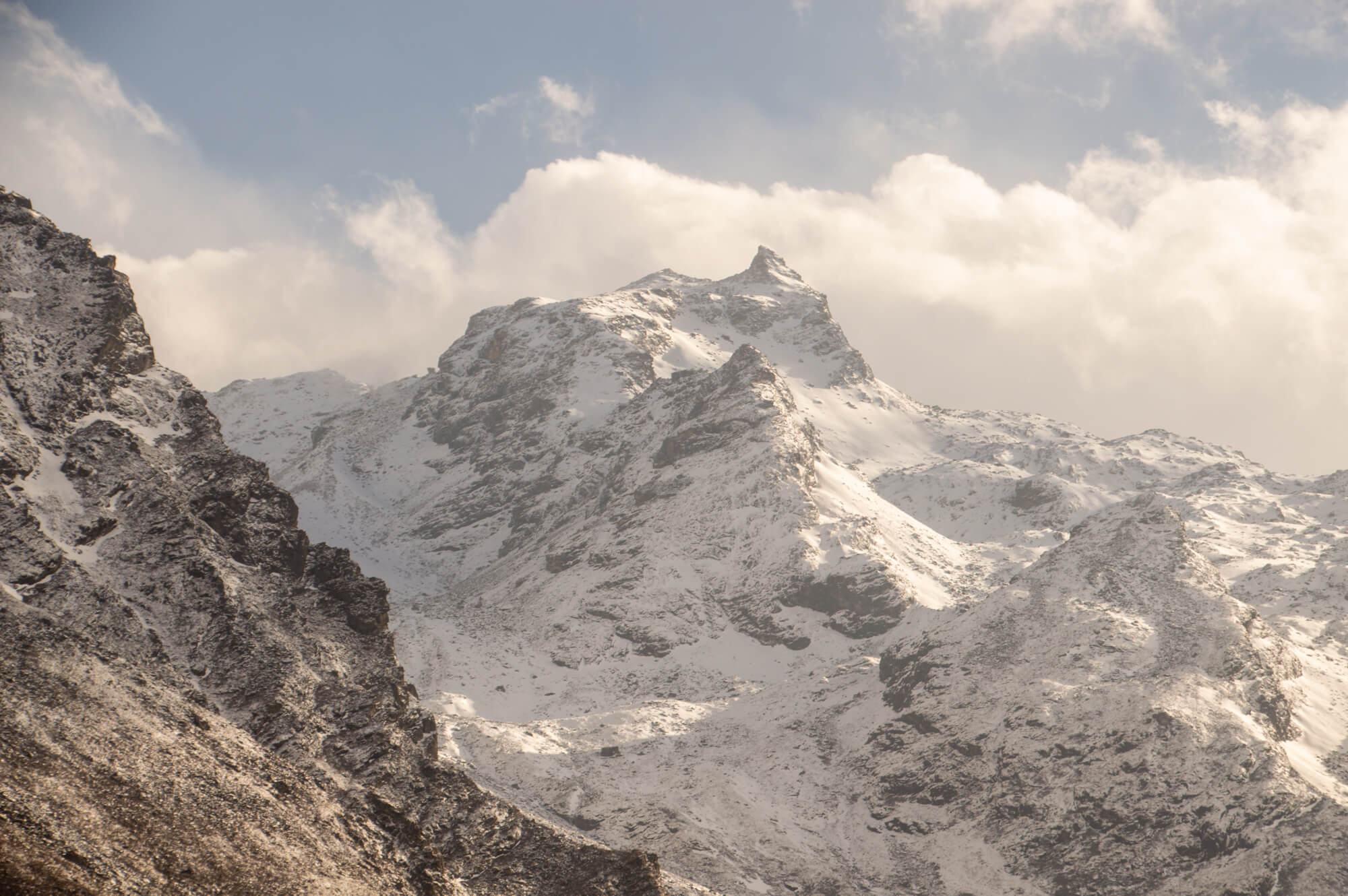Nepal’s Langtang Valley trek is one of our favourite forgotten jewels of the trekking world. With jaw-dropping mountain peaks, bright rhododendron, tiny villages, Buddhist monasteries, and welcoming locals, the Langtang is sure to solidify your love for Nepal. The earthquake that rocked the country in 2015 devastated the Langtang valley. But the area has now reopened to trekkers and choosing to trek here is an excellent way to help Langtang’s resilient earthquake survivors rebuild their livelihoods.

When is the best time to hike the Langtang Valley Trek?
The best time to trek the Langtang is September to December or March to May . Clear skies and perfect hiking temperatures create the ideal conditions for trekkers.
How much time does it take to hike Langtang Valley?
The hike is typically completed in 6-10 days, but there are plenty of ways to extend the route if you have more time.
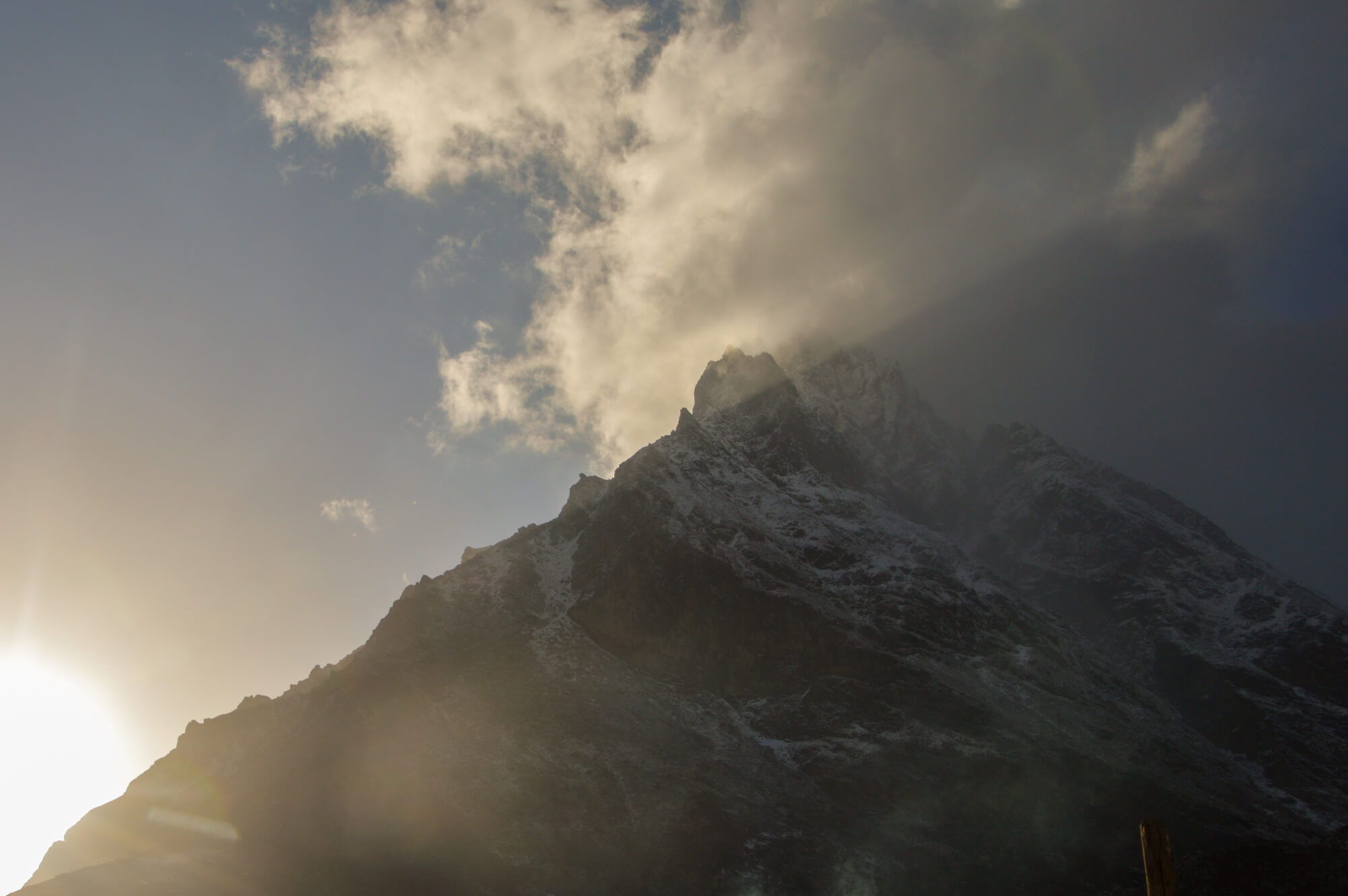
How difficult is the Langtang Valley Trek?
The Langtang Valley Trek is a moderate trek by Nepalese trekking standards. It gains significant elevation, but the elevation is easily spaced out over multiple days on the trail. Like all treks in Nepal, the Langtang Valley is high elevation and proper acclimatization should be factored in. That said, the highest village lies at 3850m, which is well below the high points reached on either the Annapurna Circuit (5416 m) or Everest Base Camp (5545m) treks.
Additionally, Nepal’s teahouse trekking drastically reduces your packing list making the elevation and mileage much more manageable than North American trips like the Rockwall trail or Rae Lakes. Not to mention, the potential of having a hot apple pie at the end of a long day! 🙂
How long is the Langtang Valley Trek?
The one-way trip from Syabru Bensi to Kyanjin Gompa on the Langtang Valley Trek is ~29 KM. Over this distance, the Langtang Valley Trek gains ~3000 meters of elevation and loses ~600 meters of elevation.
A round-trip (out and back) hike from Syabru Bensi to Kyanjin Gompa and back to Syabru Bensi is ~58 KM with about 3600 meters of elevation gain and 3600 meters of loss.

What permits are required for the Langtang Valley Trek?
To hike the Langtang you’ll require:
- TIMS (Trekkers’ Information Management Systems) card for 2000 RPS (pick this up in Kathmandu); and
- Entrance ticket to Langtang National Park (approximately 3390 RPS).
Do you need a guide or porter?
You do not need to hire a guide or porter to trek the Langtang. The trail is easy to follow and navigation is not challenging. Make sure to download a high quality offline GPS app (we like GAIA) to assist with navigation and route finding.
That said, some people do enjoy to hire a guide for their knowledge and expertise. If you’re looking for a guide seek out a personal recommendation and never just hire someone you meet on the street.
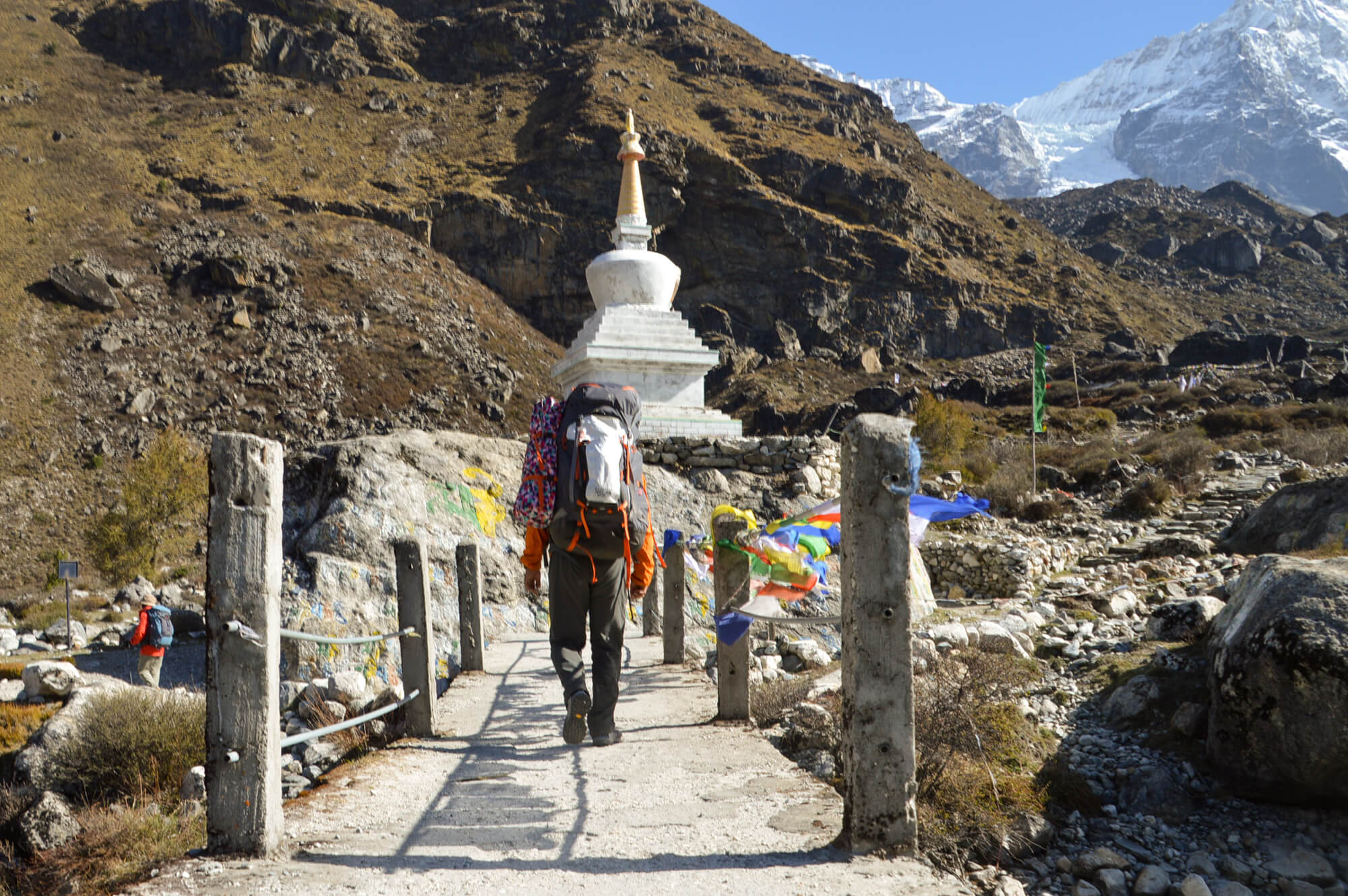
Where do you stay and what do you eat on the Langtang Trek?
The incredible thing about trekking in Nepal is that the teahouses in the villages along the way offer basic accommodation and food (namely, a lot of dal bhat!), This means you can minimize your pack weight as there is no need to carry a tent or food provisions along with you.
Why go on the Langtang Valley Trek vs. Annapurna Circuit or Everest Base Camp?
Most travellers visiting Nepal gravitate towards the Annapurna Circuit or Everest Base Camp treks. Langtang has always offered a quieter option with fewer tourists and less infrastructure (there’s certainly no road like the Annapurna Circuit now has). Sadly, Langtang has made its way further off the map after the 2015 earthquake that destroyed lives, homes, and trails. In the three years since the quake, homes have been rebuilt and trails reforged, but the number of trekkers has hardly increased. Trekking here provides an invaluable opportunity to bring income back into a region that is struggling to rebuild. Besides being a quieter trek where your visit can make an important difference for the income of local communities, Langtang is easy to access from Kathmandu. It’s also a lower elevation trek (the highest village is at 3850m), which mitigates the risk of altitude sickness. There are a number of great, basic teahouse options, so you can easily trek this route without a tent.
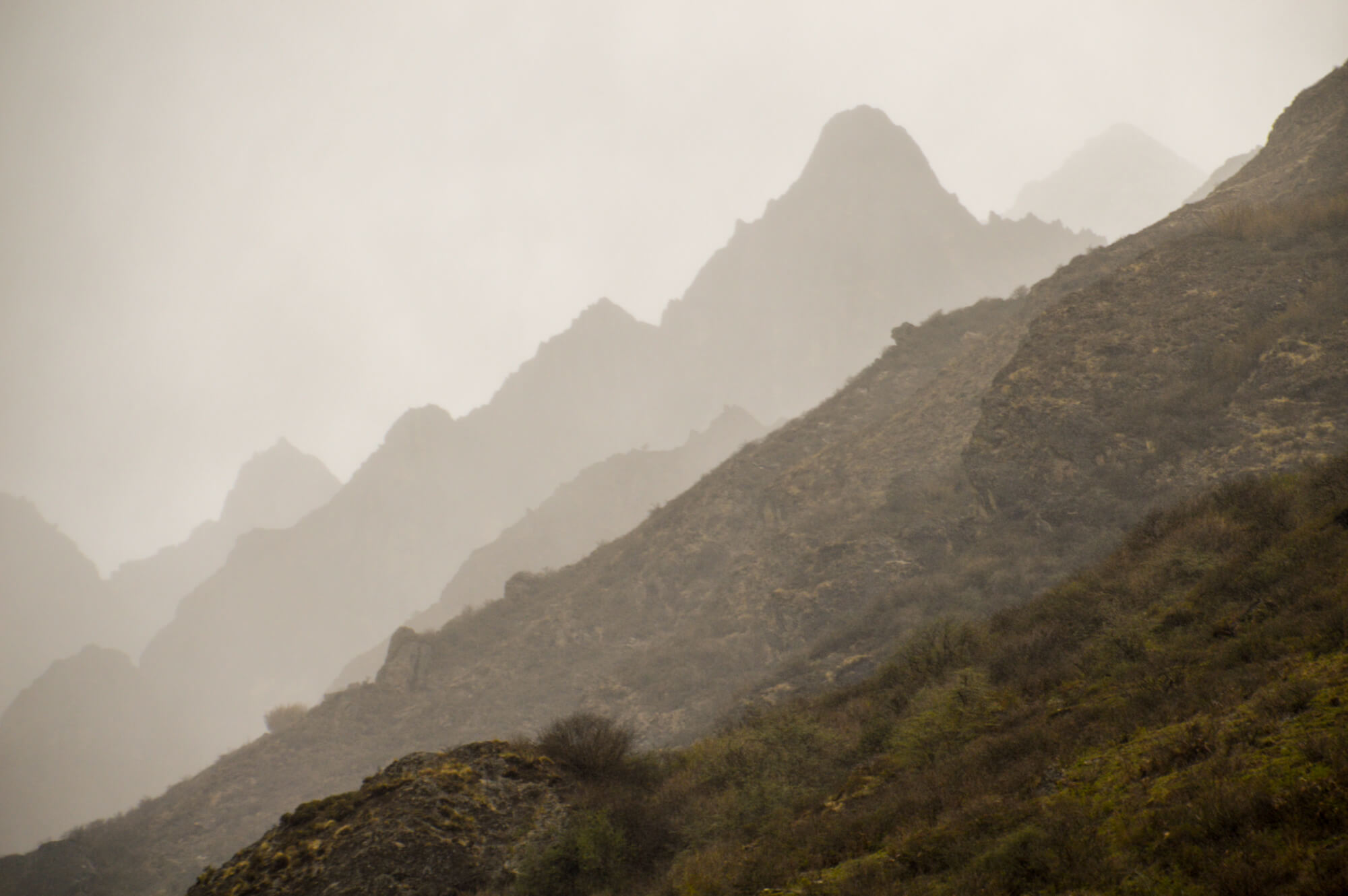
Whatever you do, DON'T FORGET THIS
In remote areas travel insurance that covers emergency evacuation or medivac is absolutely essential. My former roomate was medivaced to Bangkok from Cambodia after a medical emergency and her travel insurance ended up paying out a six figure sum for the medical bills.
Hopefully, you never need to make a claim, but if you do you’ll be beyond happy you were prepared! Don’t start your trip without it! Check out World Nomads for a quote*.
Itinerary for hiking the Langtang Trek
Day 1: Travel from Kathmandu to Syabru Bensi
Catch the bus in Kathmandu in the morning (approximately 550 RPS) to travel the 122 km north to the kicking off point for Langtang – the town of Syabru Bensi. Be forewarned that this bus ride is really quite terrifying, but that’s part of the adventure! It can take anywhere from 8 to 12 hours to reach Syabru Bensi by bus. Do be prepared to show your TIMS card and permit along the way. Once you arrive in Syabru Bensi, find a teahouse for the night and tuck into bed early to prepare for your first day of trekking.
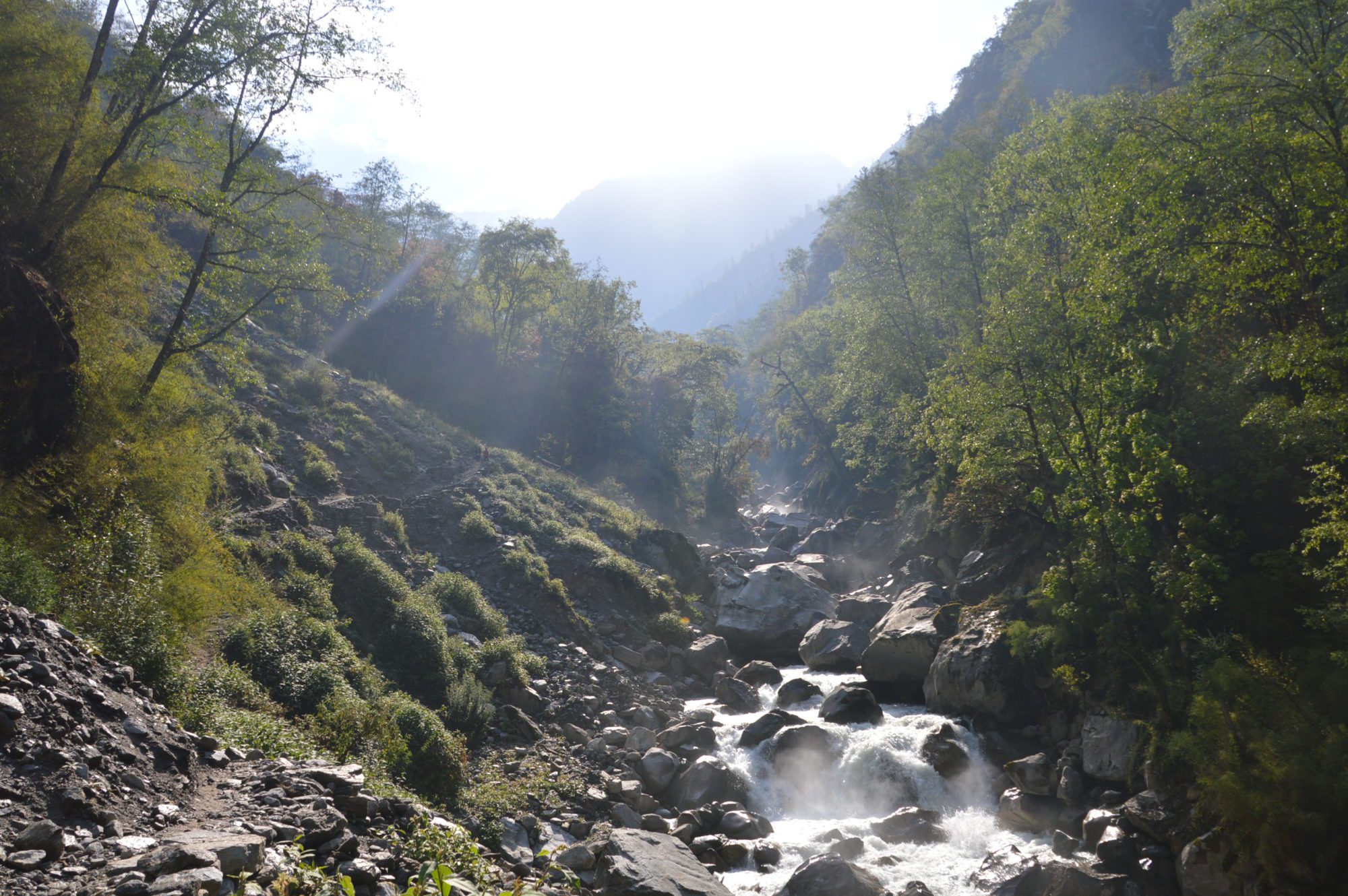
Day 2: Syabru Bensi to Lama Hotel
10.5 KM | 1400 M elevation gain 400 M loss
The first day of the Langtang valley trek takes about 6 hours, depending on your pace. The trail crosses the Bhote Kosi River and weaves through oak and rhododendron forests (watch out for animals suddenly coming around the corners!). Beautiful Lama Hotel is a great place to stop for your first night with several good teahouse options.
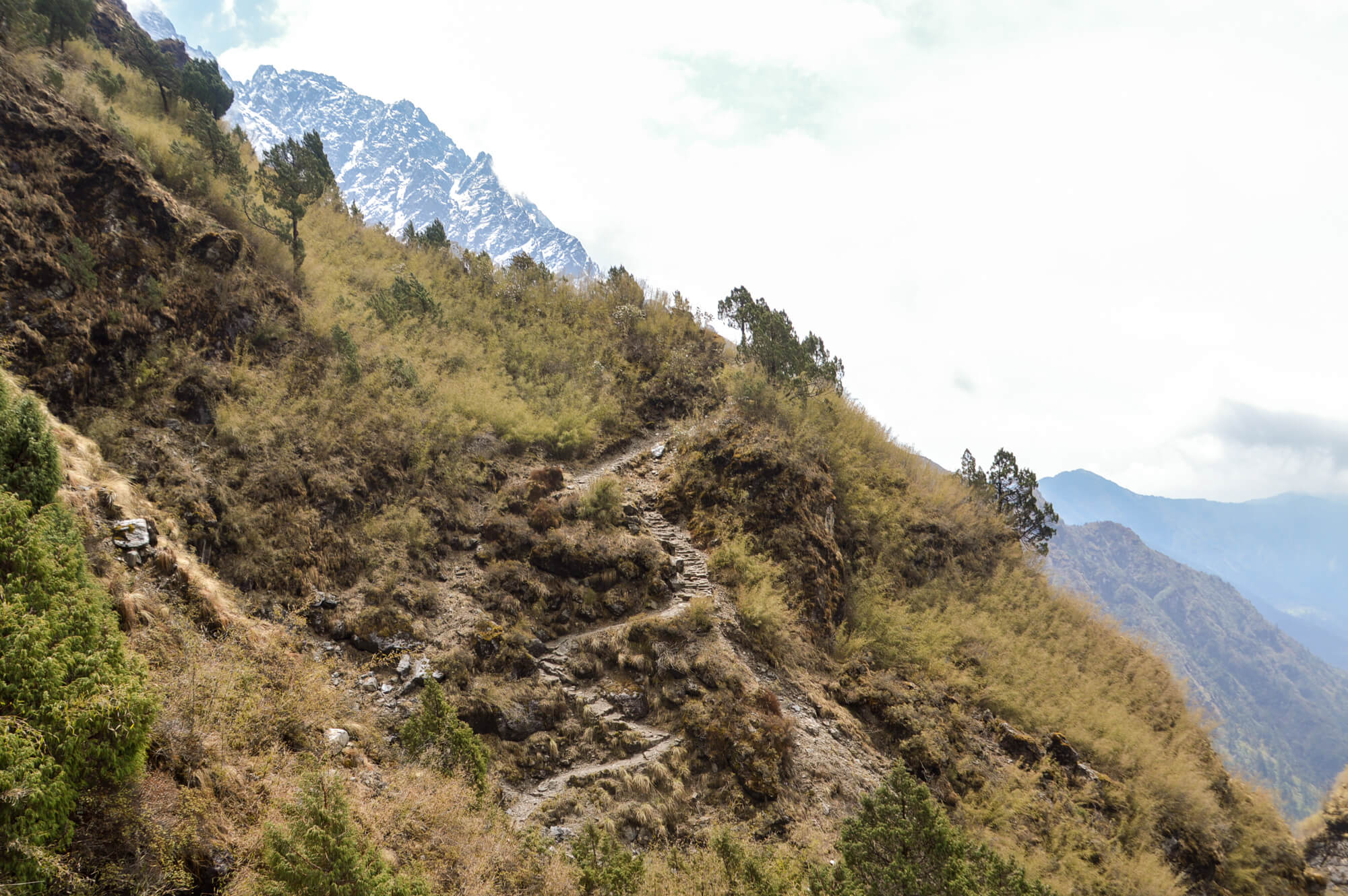
Day 3: Lama Hotel to (New) Langtang Village
11.5 KM | 1200 M elevation gain 200 M loss
Day 3 takes just over 6 hours and ends 100 metres past the tragic site of old Langtang Village. This is where the devastation of the earthquake was felt the most strongly in the valley. Only a single house survived the landslide caused by the quake in 2015. 175 villagers and 41 foreign trekkers were killed in the village during this tragedy. These names are commemorated on a memorial mani wall where the village once was. Just a short walk up the valley, Langtang Village is being rebuilt. Staying here is an important way to support the earthquake survivors as they rebuild their lives after losing so much.
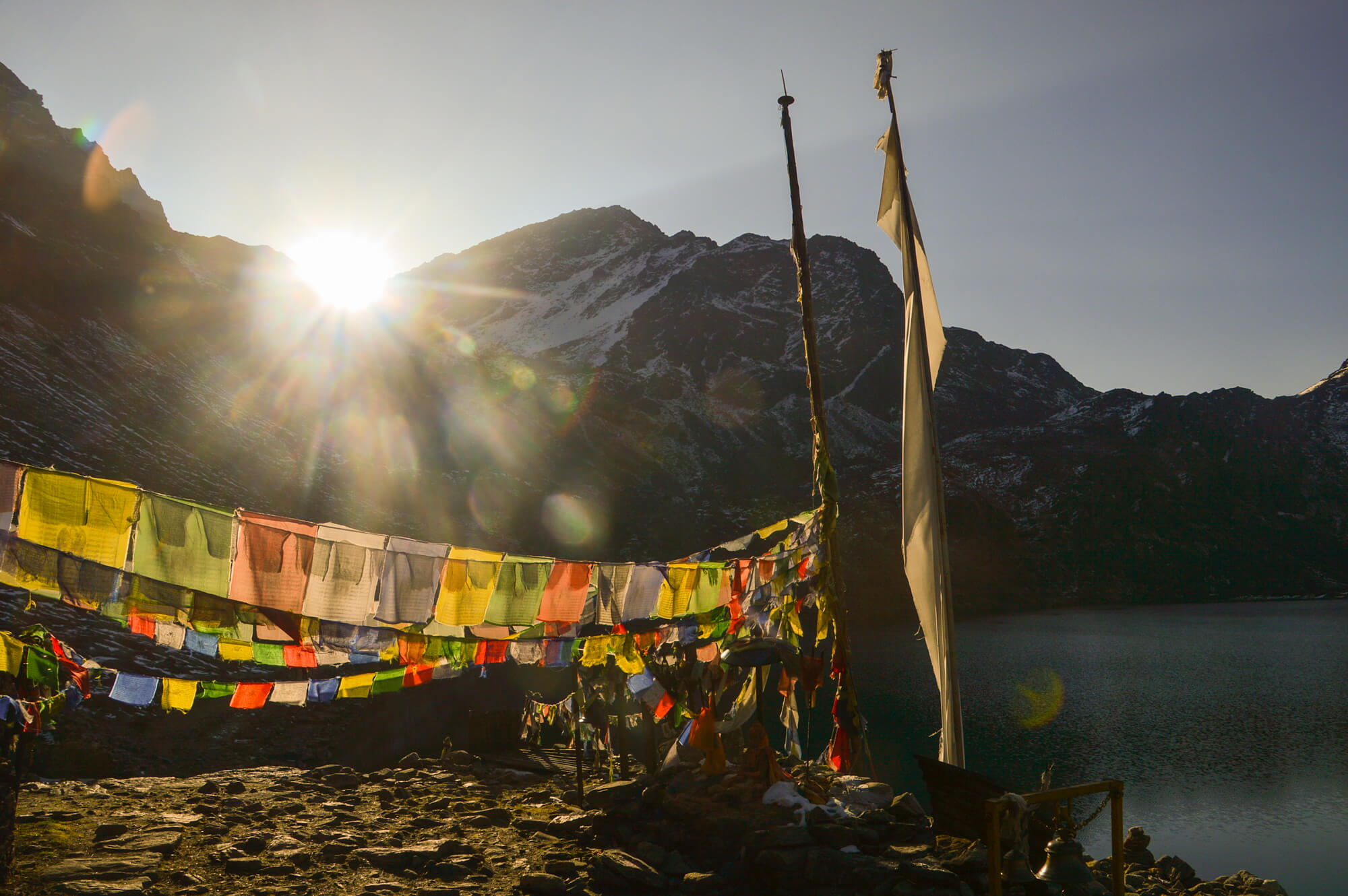
Day 4: Langtang Village to Kyanjin Gompa
6.0 KM | 400 M elevation gain
Day 4 takes you to the highest village you can stay at: Kyanjin Gompa. As you reach the higher altitude here, the valley opens up into yak pastures surrounded by towering mountains. It’s only a 4 hour walk, so be sure to take your time and allow your body to acclimatize. The elevation here can be an issue for some people. Kyanjin Gompa is home to an incredible monastery, a yak cheese factory, and a small village. It’s a beautiful place to stay for a few nights and explore the surrounding peaks if you have the time.
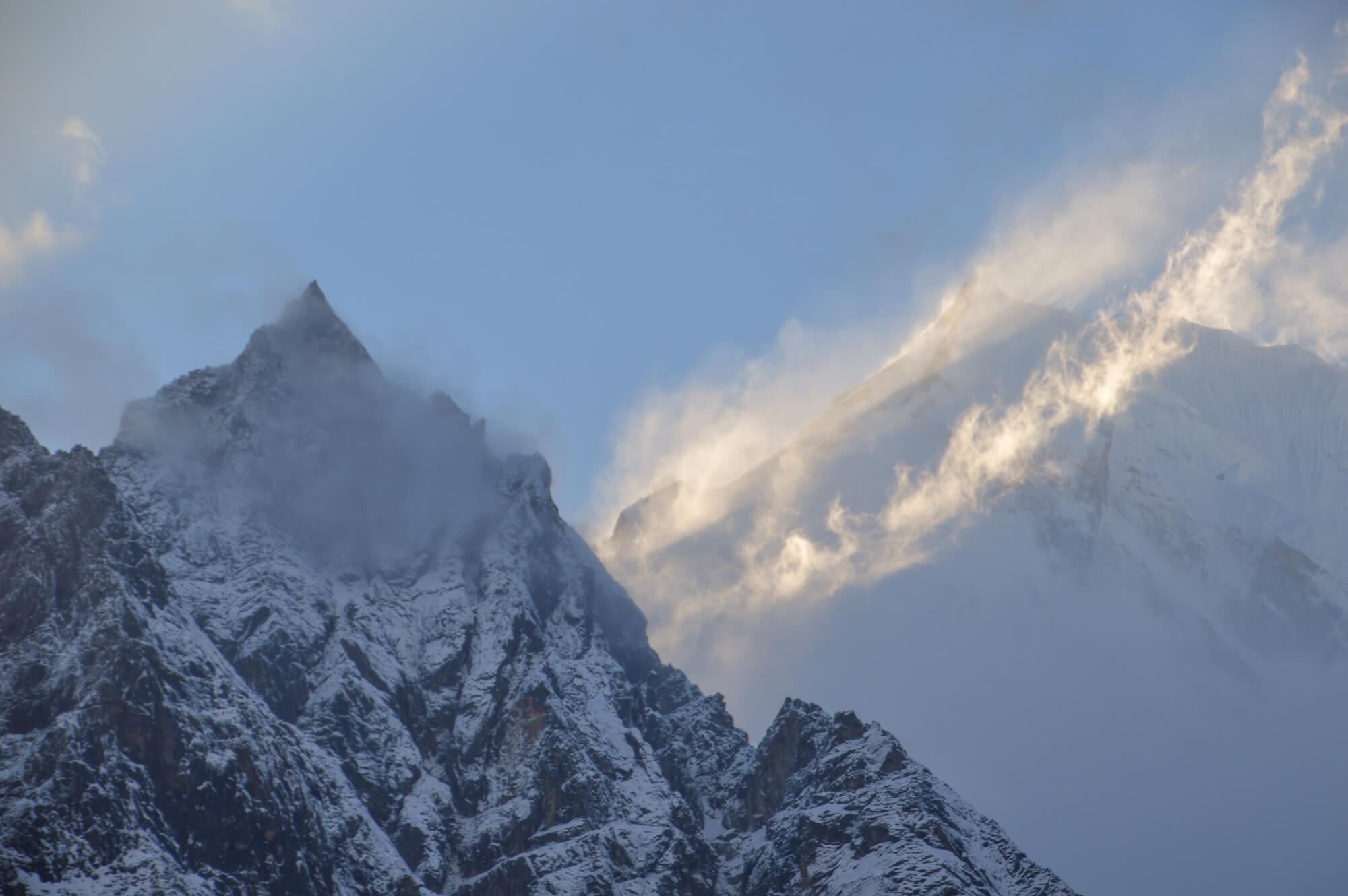
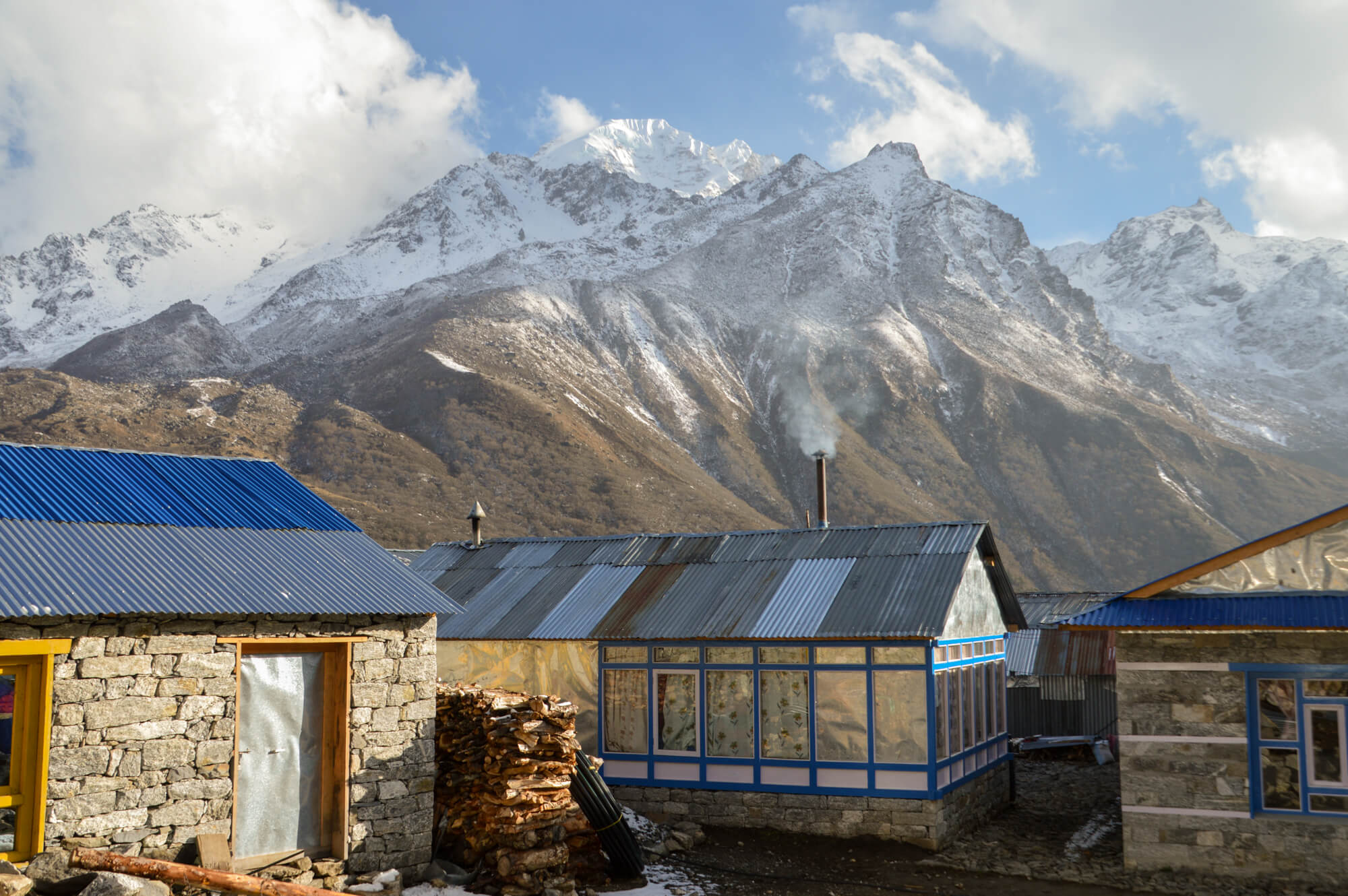
Day 5-6: Kyanjin Gompa (with a trip to Kyanjin Ri)
Breathe a sigh of relief as you get to leave your big pack behind at the teahouse you stay at. Spend a couple days exploring this incredible area and use Kyanjin Gompa as your basecamp for these day hikes:
Kyanjin Ri – this popular and worthwhile half-day hike to a height of 4604m offers incredible vistas of the surrounding area climbing 720m in 2.0 Kilometers (one-way).
Tsergo Ri – This challenging full day hike to the top of Tsergo Ri gains 1110 meters of elevation over 5.0 Kilometers (one-way).
Continue up the valley to Langshisha Kharka – Continue up the valley for more spectacular views on this long day hike which gains 450 meters of elevation over 12 KM (one-way).
Glacier Viewpoint – For an easier option a 2.0 km hike gains 200 meters of elevation for a suberb view of the Langtang Lirung (one-way).

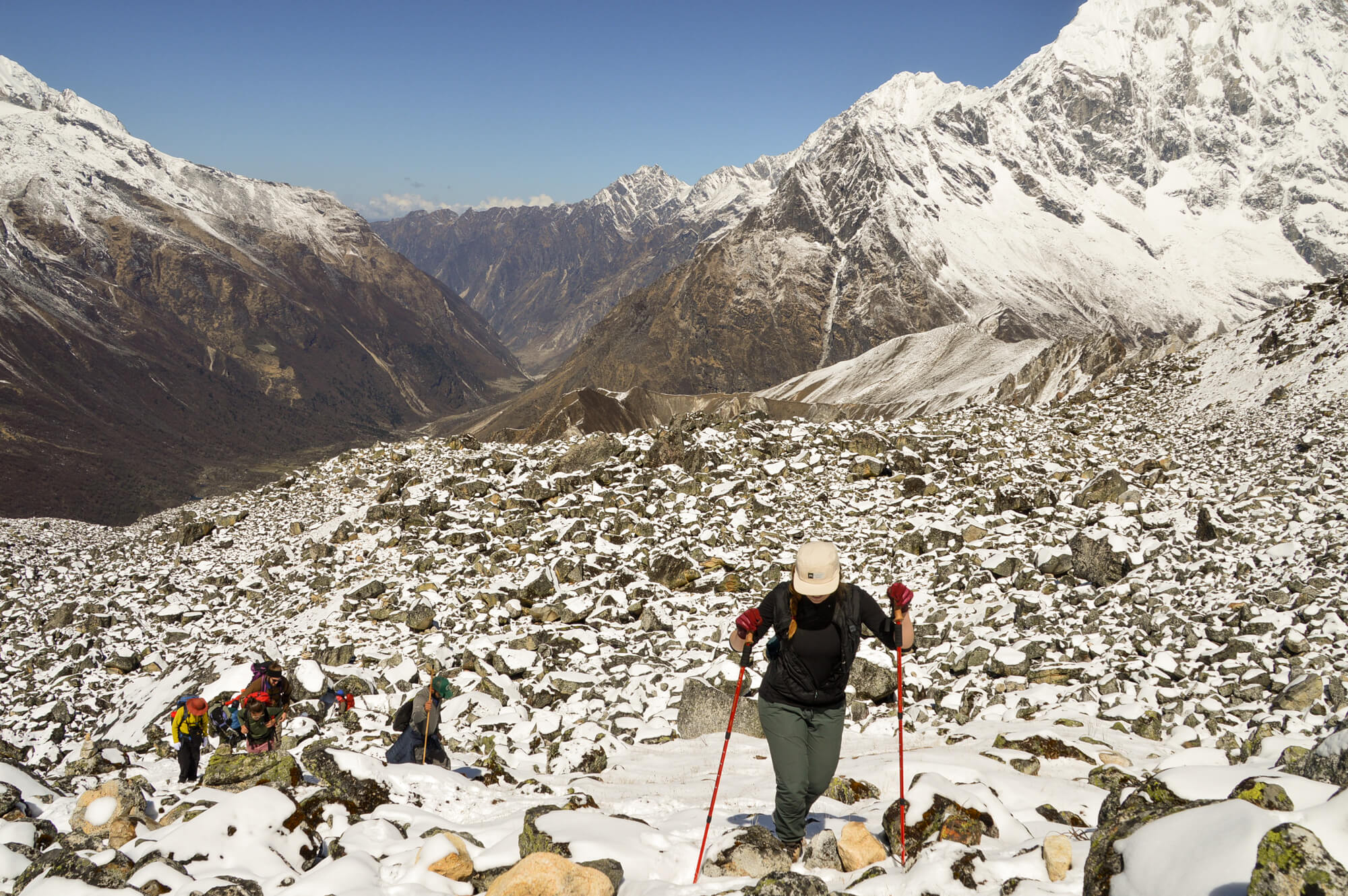
Day 7: Kyanjin Gompa to Lama Hotel
17.5 KM | 200 M gain 1600 M elevation loss
The way down to Lama Hotel should take about 5 hours. Your knees will feel the descent and you’ll be thanking yourself for bringing trekking poles to ease the load! Once you get to Lama Hotel treat yourself to some momos or more dal bhat.
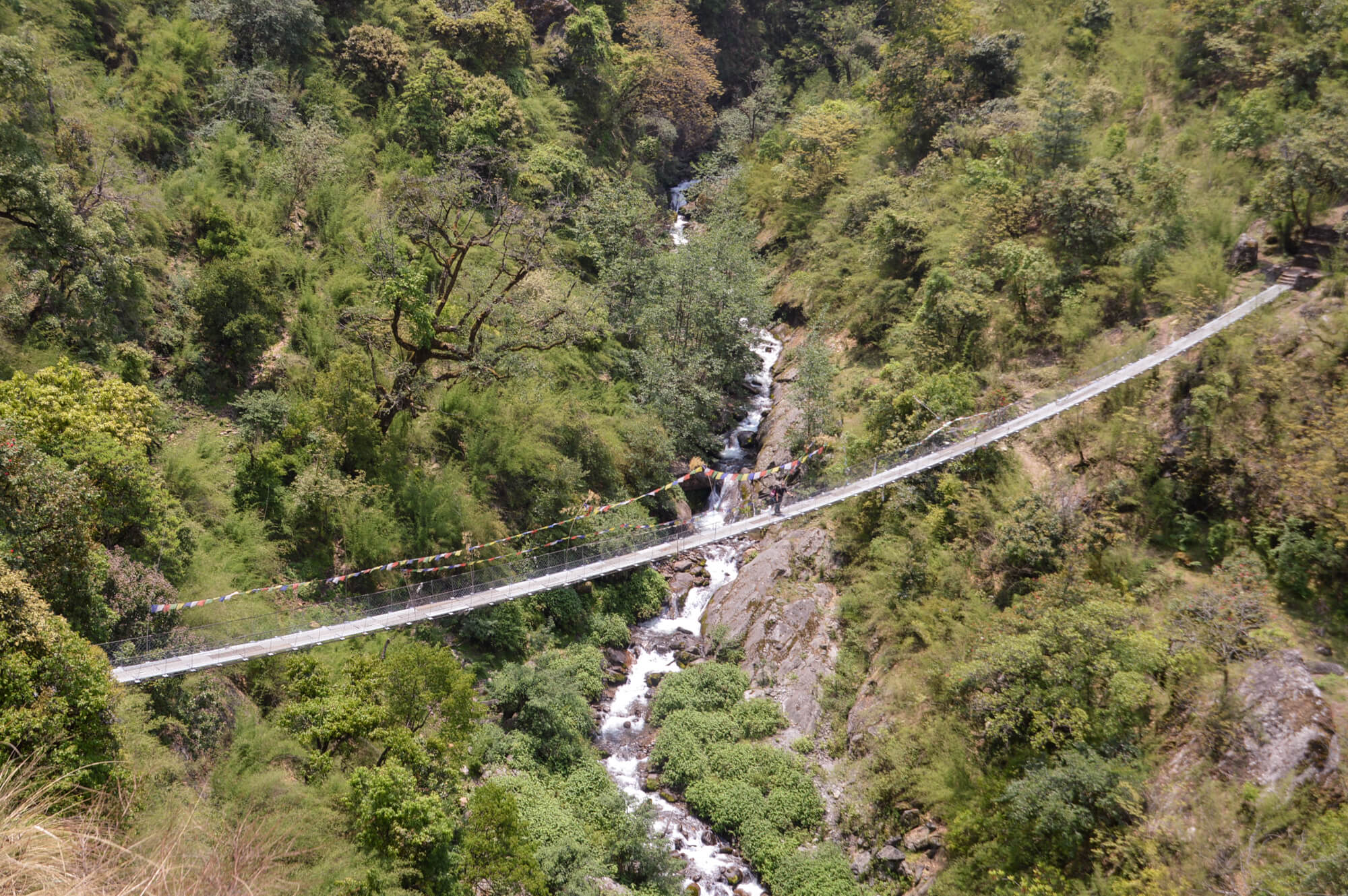
Day 8: Lama Hotel to Syabru Bensi
10.5 KM | 400 M gain 1400 M elevation loss
The final day should take around 6 hours to descend, getting you back into Syabru Bensi for a needed early bedtime.

Impact of the Earthquake on Langtang
The 2015 earthquake has had immeasurable repercussions for the communities in the Langtang valley. With a significant amount of infrastructure destroyed and a rapid drop in income with fewer tourists visiting, this area continues to suffer greatly. There are fewer kids in the communities you trek through than there were before the earthquake. This is a result of the local schools destroyed by the earthquake. Families who have the funds to do so, send their children to boarding schools in Kathmandu to get an education. With the only employment opportunities being subsistence agriculture or the now quiet tourism industry in their home villages, a number of these young people won’t return to the area. Those who don’t have the money to send their children to Kathmandu lose out on giving their children an education. With this in mind, trekking to Langtang has never been more important from a sustainable tourism perspective. For more insight, this beautiful photo story showcases the personal stories of the survivors in Langtang.
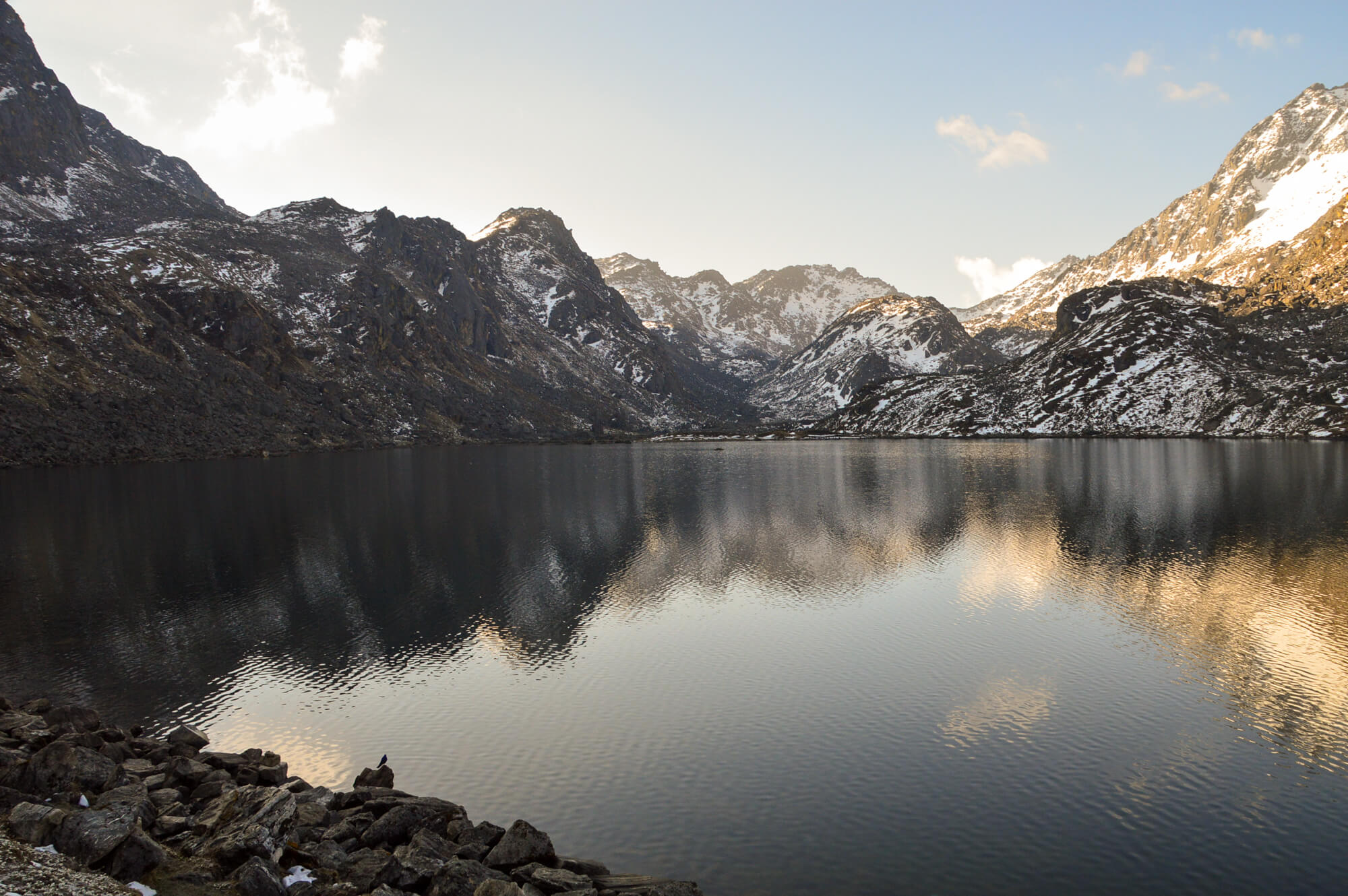
What to pack for the Langtang Valley Trek
Essential Langtang Packing List
Backpack
If all you’re planning on doing is hiking we love the Gregory Focal or Women’s specific Facet which at ~2.5lbs provide a great compromise between barebones ultralight packs and the heavier feature-laden packs!
If you’e stopping in Nepal as part of a longer trip, the Khmer Explorer Travel Set will be perfect for you. It’s more functional for travel, but has a hip belt and suspension system which make it extremely practical for hiking trips like the Langtang!
Sleeping Bag
Patagonia’s sleeping bags are 5 star!! It’s unbelievably lightweight and packs down small. The 30°F / -1°C to be perfect for most outings – if it gets colder you can always layer up! Like all Patagonia products, it’s not cheap, but they stand behind their gear and the quality matches the price point. If you spend a lot of time in colder environments they also make a 20°F / -7°C version. These bags are a worthwhile splurge!
Nalgene Water Bottle
Use it for water, soup, as a hot water bottle to warm up your sleeping bag. Don’t leave home without your Nalgene.
Water Purification
For purifying water, I’m a huge fan of the Steripen. It’s light, portable and only takes minutes to purify a liter of water in a Nalgene. Press the button, place the pen in your bottle, and stir for a couple minutes!
First Aid Kit
The pre-built kits from Adventure Medical Kits have served me well on many adventurers. At the end of your trip write down any items you used and replace them so they’re ready for your next adventure. Add a few ibuprofen, high-altitude medicine into the kit as well.
Warm Hat
Warm Mittens or Gloves
Wind / Rain Shell
An essential piece for the wind, rain, and snow you might experience on the Langtang trek. Check out the Patagonia Torrentshell (or Men’s Version version).
Rain Pants
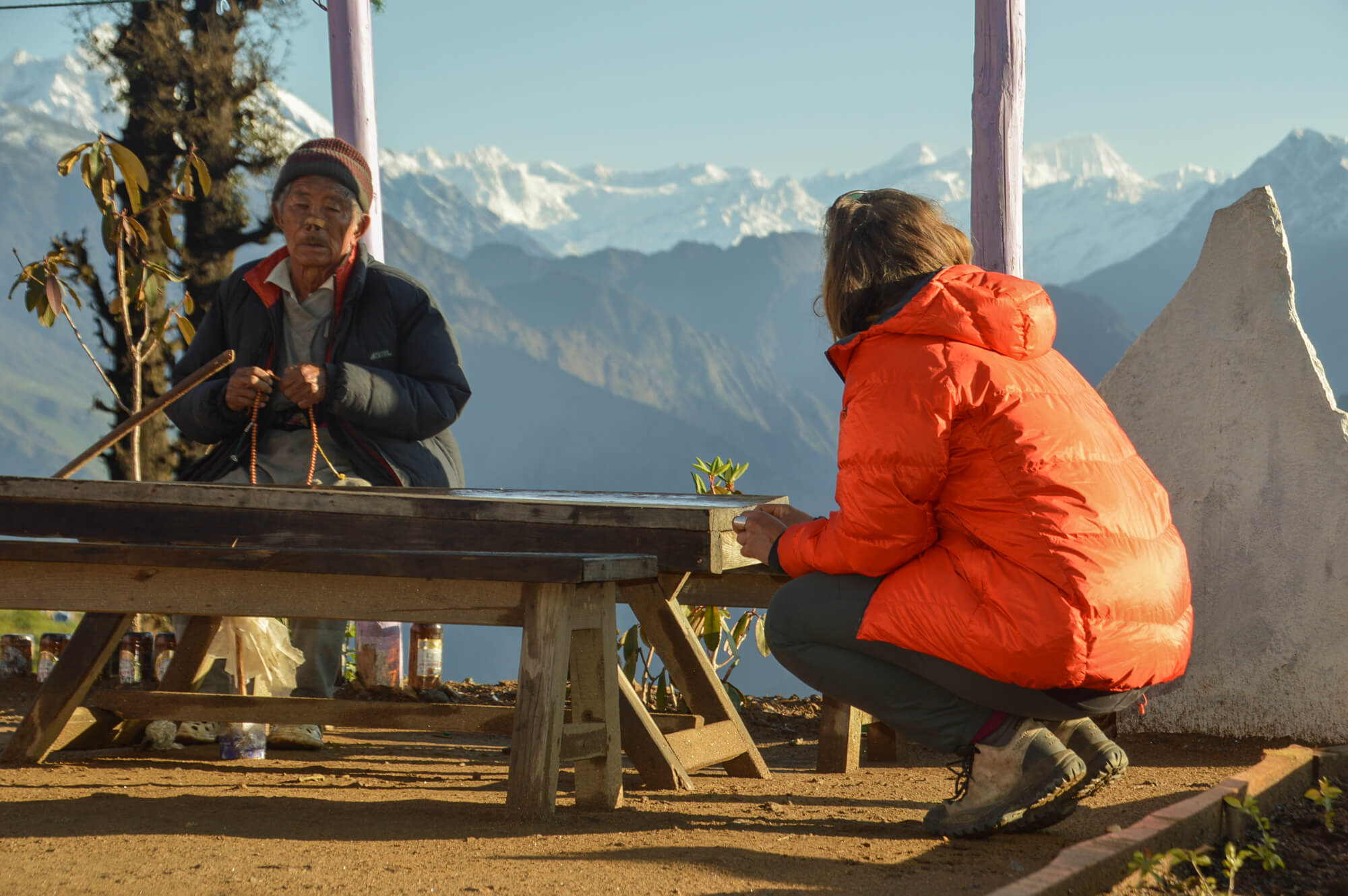
Puff / Down Jacket
The Patagonia Nano Puff® Hoody is a perfect multi-functional item for trekking, everyday, and pretty much anything where you might need a bit of warmth. I’m still looking for an activity it doesn’t work for. They also make the Nano Puff in a men’s version.
Sun Hoodie
Hiking Shoes or Boots
Headlamp
Invaluable if you get stuck walking in the dark or the electricity goes out. The Spot 350 is the way to go with 6 modes including the night vision saving red light! Red light mode takes a minute to get used to, but once you do it’s a total game changer.
Hiking Pants
A couple pairs of great and durable hiking pants are essentials for the Langtang trek.
Merino Base Layer
Stays warm when wet and effectively wicks moisture. Pack a couple of long sleeves and a few short sleeves. One pair of long underwear are great to layer up with!
Sandals
A pair of Teva’s are great for hanging out at the teahouses and getting out of your hiking shoes.
Hiking Socks
Darn Tough Vermont makes the best hiking socks hands down. They’re guaranteed for life/replaced free of charge and they don’t stink. Really! I typically bring 3 pair. 1 pair for hiking, 1 pair to change into at camp, and a reserve to throw into the rotation as needed.
Trekking Poles
Poles are great for reducing the strain of long grueling descents and providing extra stability on exposed sections. Both these features you’ll experience on the Howe Sound Crest Trail, so do yourself a favor and get a pair of poles. For a reliable entry level option try these Black Diamond Poles or consider upgrading to the carbon fiber to save extra weight.
Additional items to pack
-
-
- Map / GPS app (we like GAIA)
- Sunscreen
- Sunglasses
- Toilet paper
- Small bills/ money
- Journal/book/deck of cards (good for relaxing in the evenings)
-
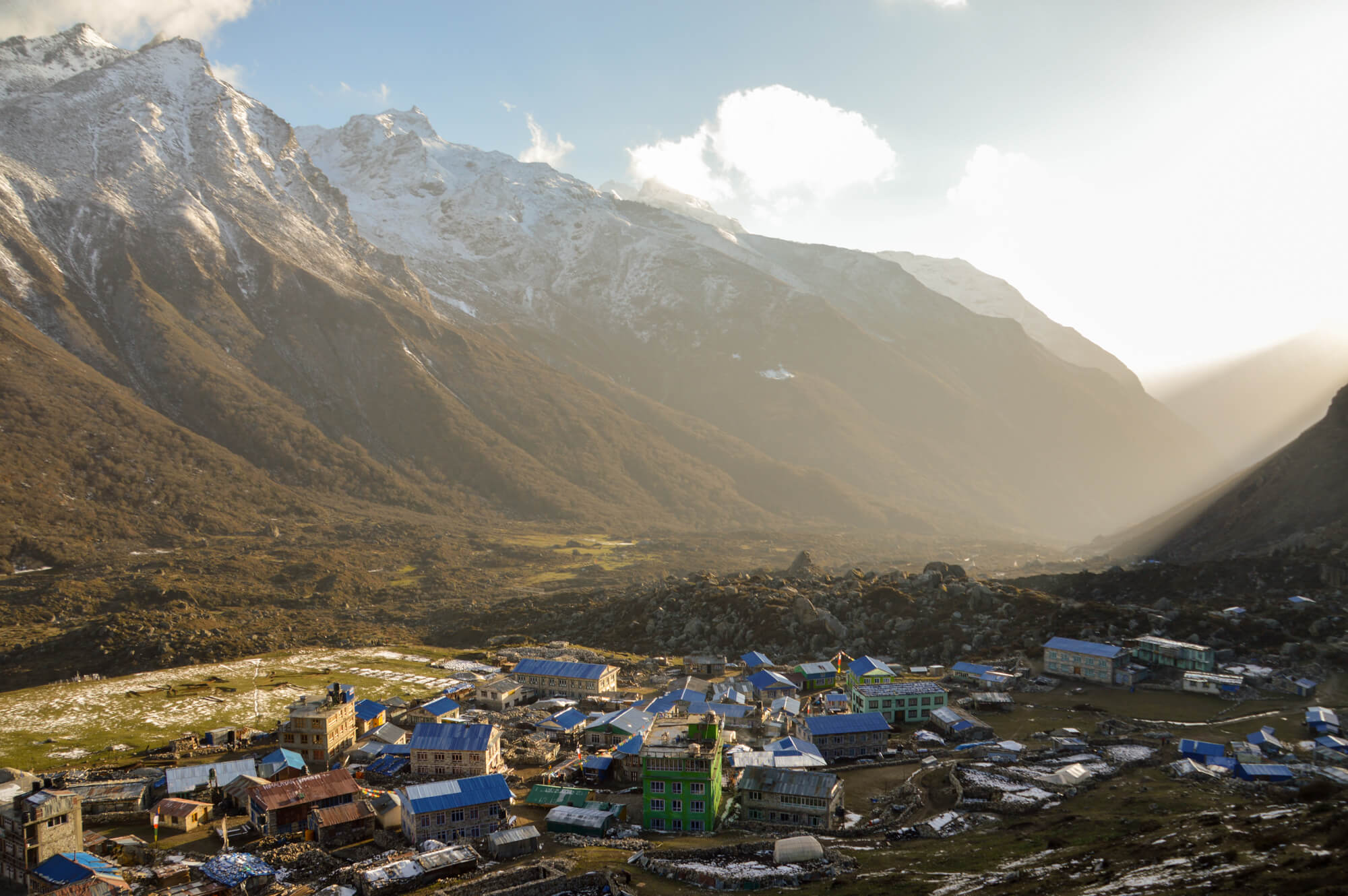
*Thanks to the wonderful Lisa Smith for giving us updates on the Langtang trek post-earthquake and allowing us to share her beautiful photos that you see featured in this article.
Disclaimer: Some of the links in this post are affiliate links. If you click one of the links and make a purchase we’ll earn a small commission at no cost to you. Just like the travel backpacks we build, we’re very particular . So any products or services we suggest, we test and use ourselves before making any recommendations or endorsements.
Banana Backpacks Inc. is a participant in the Amazon Services LLC Associates Program, an affiliate advertising program designed to provide a means for sites to earn advertising fees by advertising and linking to Amazon.com
